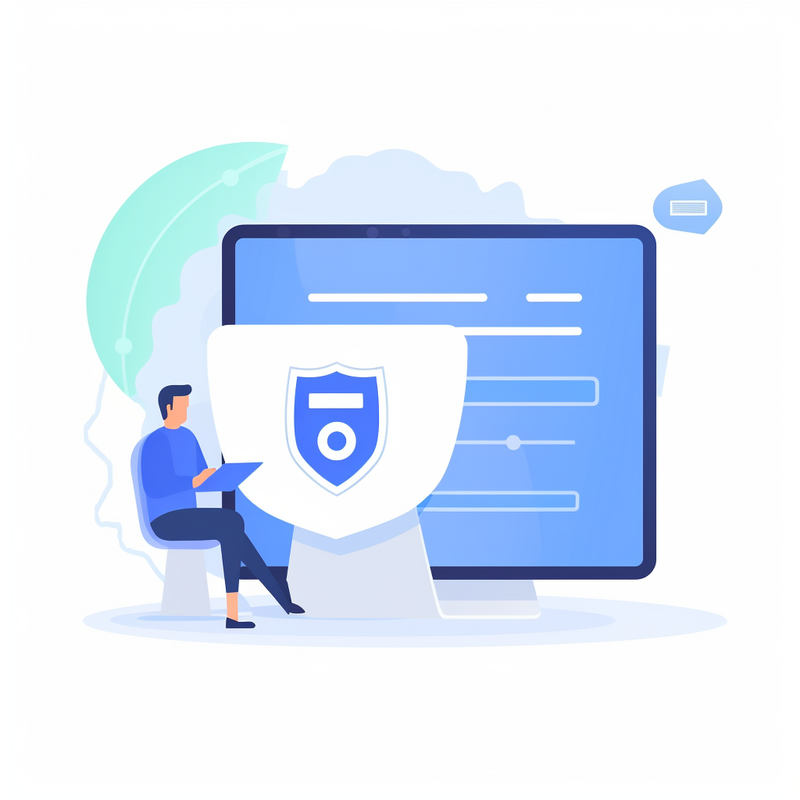
Educational platforms and articles offering broader knowledge on cybersecurity, protecting personal data, and understanding online threats.
According to Dimension NTT Security, the education sector was one of the most targeted sectors for cyberattacks in Australia during 2017, accounting for 26% of all attacks. Across the Asia-Pacific region, this proportion of attacks increases to an estimated 57%.1. institutes are not only vital for the prosperity of this ...
In an increasingly digital world, implementing robust security measures is vital to protect your devices, activities. Here are some key security measures you should employ: Keep ...
To understand awareness, it is important to first reflect on the topics of information security awareness and cyberspace. Information security awareness as a concept defines an individual's or a group's of information security, including risks and to information, and methods that could be applied to protect such information (Kruger and Kearney 2006).
Cloud security: Cloud security is a broad category that includes all technology, policies, and controls used to secure cloud computing applications, services, and infrastructure. There are ...
It is past time for their efforts to change. This covers three such changes that companies can make to adapt to the growing insecurities of the digital world. Post
This is the first systematic review of availability in the general context of cyber risk and . By identifying and critically analysing the available datasets, this paper supports the research community by aggregating, summarising and categorising all available open datasets.
1. Identify existing and potential security to own profile. 1.1 Determine all current accounts and profiles. 1.2 Identify common to security of profiles. 1.3 Identify industry-specific risk factors that raise risk levels to own profile. 2.
These systems can also reduce Artificial intelligence complements blockchain-based privacy solutions by enabling users to better manage their by ensuring that models derived from the are more accurate, fair, and reliable. 2. privacy.
tabled in the content. The overall legislations and regulations on protection are also listed. It is ur-gent for students to protect their in learning. The second chapter details the definition and constitutes of privacy, especially the lifecycle of .
Types Of Faced by the Learning Sector. DDoS Attacks. Theft. Phishing scams. Control Who Has Access to Sensitive . Vet All Third Party Providers. Educate Your Students & Staff. Regularly Back Up Your . Beef Up Mobile Security.
Abstract. A new wave of attacks has been brought on by the growth of social media. Individuals and companies are becoming increasingly vulnerable to internet risks, such as ...
The OSA is broad in scope and has significant implications for a number of digital service providers, introducing new measures designed to make the industry more accountable for the safety of end users and giving the eSafety Commissioner enhanced powers to enforce the OSA effectively.
Manit Kaushal, CTO & Co-founder of UPI Study, a pioneering education , shares his insights on the pressing need for enhanced safety. 'The digital realm of education is a ...
Hamdan et al. (2013) surveyed teenagers to investigate and identify the various they experience and identified cyberstalking as one of the most commonly encountered. Aponte and Richards (2013) conducted a literature review to identify risks for children; cyberstalking is one of them.
classes are more vulnerable to cyberattacks compared to traditional classes, specifically from an endpoint security, privacy and process perspective. Cyberrisk that can jeopardize the safety of learners includes: Malicious software. Hacking, ransomware and denial of service attacks. Spoofing, fraud and theft.
Over 30 years ago, Mason (Citation 1986) voiced ethical concerns over the protection of informational privacy, or "the ability of the individual to personally control information about one's self" (Stone et al., Citation 1983), calling it one of the four ethical issues of the information age.Since the 1980s, scholars have remained concerned about informational privacy, especially given ...
Part 3: learners' privacy and security Conceptualizations of privacy and protection The idea of privacy carries strong cultural components, starting with variations in the terminology used. By 2019, 132 laws had been adopted regarding the protection of information (Greenleaf, 2019a).
1. Introduction. Access to the internet is continuing to expand, along with its use for a wider variety of purposes. There are estimates that close to 4.7 billion people are active users of the internet - close to 60% of the world's population (Johnson, 2021).However, many users have limited or awareness of the risks of being , have never been involved in or ...
1. Introduction. The use of digital technologies in the education sector has been on the rise around the world over the last few decades. Whether in the form of computing devices for content delivery, learning applications, cloud storage, learning management systems, computer-based assessment and training systems or predictive learning analytics, technologies (EdTech) have ...
security technologies, to help improve overall security of education in management and protection. This Technical Guide is designed for service providers of education stakeholders to minimize the risks while managing of students and teachers.
The Handbook is based on the " Security Technical Guide for Education ", which was launched by the UNESCO IITE and Tsinghua University earlier. Both the Handbook and Technical Guide complement each other to promote privacy protection for teachers, students and parents in learning.
The Handbook aims to guide students, teachers and parents to protect their privacy in learning. It sorts out security risks and suggests specific strategies to protect information from three aspects: before, during and after learning.
awareness guards learners against immediate digital fosters a mindful and responsible internet usage culture that benefits the community. 10 Tips On Campus 1. Use Strong and Unique Passwords. The first line of defense in your is a strong password.
Below are the top five faced by teachers, as outlined in a report by the Consortium for School Networking (CoSN). Phishing: These attacks leverage social engineering by exploiting human emotion to trick victims into giving up sensitive information such as passwords or credit card details.